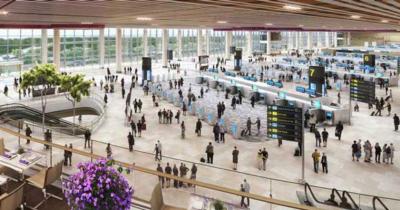Changi Airport’s new Terminal 4 is scheduled to commence operations on 31 October. With the final set of checks and reviews now being undertaken, FTE explores how self-service and biometric technology is being used to create a seamless passenger experience.
Fast and Seamless Travel (FAST)Technology is at the heart of the new Terminal 4, which will be the first terminal at Changi Airport to offer end-to-end Fast and Seamless Travel (FAST) for departing passengers.
The implementation of FAST across the terminal means that at all passenger touch-points – from check-in and bag drop to immigration and boarding – self-service and biometric technology will help to provide passengers with a seamless and intuitive experience.
At the point of check-in passengers will be able to use self-service kiosks to print their own boarding passes and bag tags. They can then drop their bags at an automated bag drop machine after their identity has been verified. At immigration, passengers will be able to scan their own passport, boarding pass and fingerprint to facilitate the necessary identity checks. The automated immigration gates also use facial recognition technology to authenticate the passengers’ identity.
This self-service immigration function is available to passengers who are at least six years old and who are Singaporeans, Permanent Residents, Long Term Pass holders or visitors whose fingerprints are registered with the Immigration and Checkpoints Authority.eMeanwhile, at the boarding gate, technology has also been implemented. Passengers who have used the automated immigration gate can simply scan their boarding pass at the boarding gate and authenticate their identity with the facial recognition system.
Centralised security screening, featuring CT technologyPassengers will be able to keep their laptops and tablets in their bags thanks to the use of computed tomography technology at the Terminal 4 centralised security screening checkpoint.
New technology is also being used at the security checkpoint. The centralised security screening in T4 uses computed tomography (CT) technology so passengers can keep their laptops and tablets in their bags. An automated tray return system and multiple divestment points will also help to optimise efficiency and keep waiting times down.
Although Terminal 4 is just half the size of Terminal 3, thanks in a large part to the effective use of technology the new facility will have a capacity of 16 million passengers a year, which is two-thirds that of T3.





